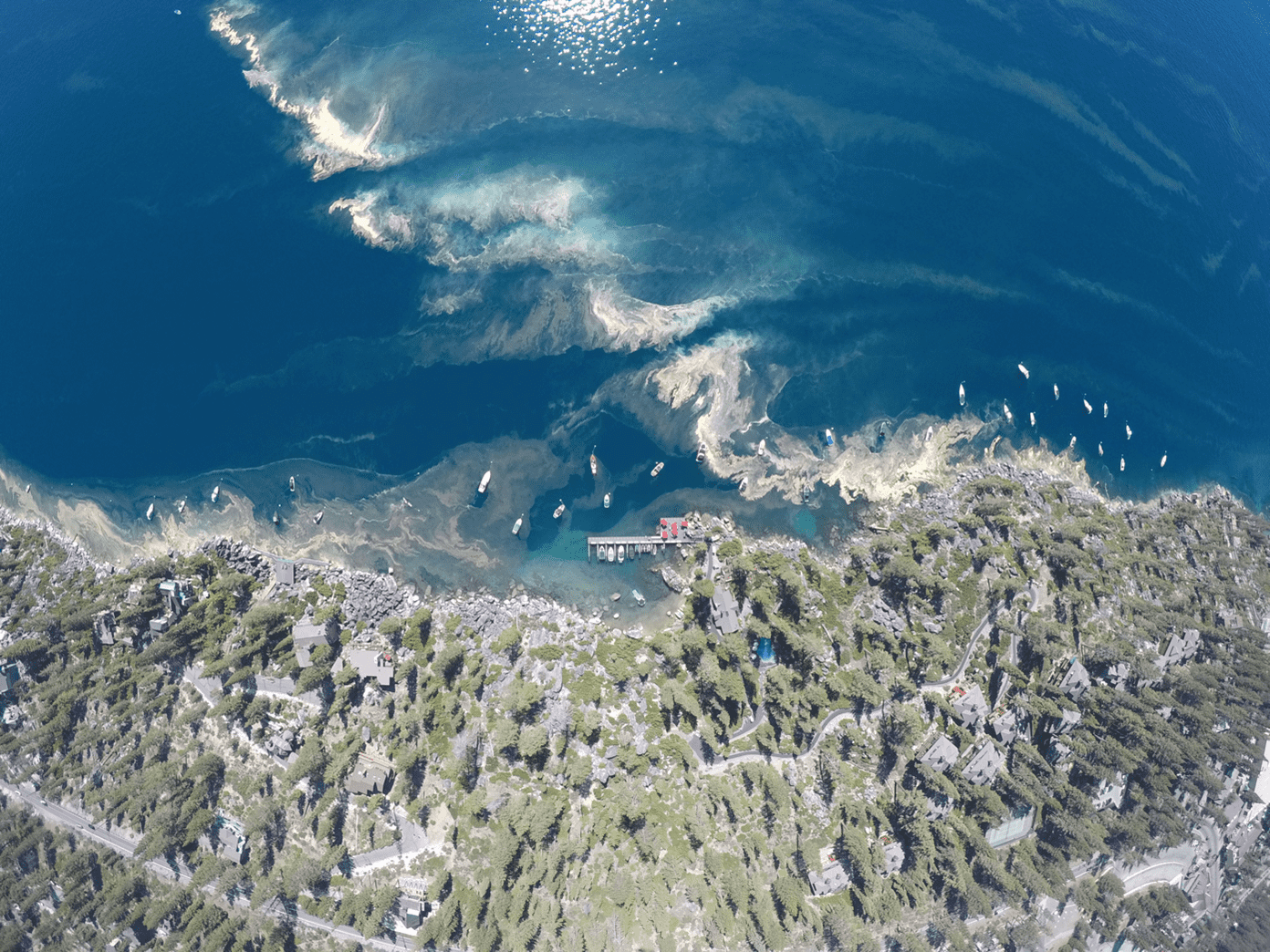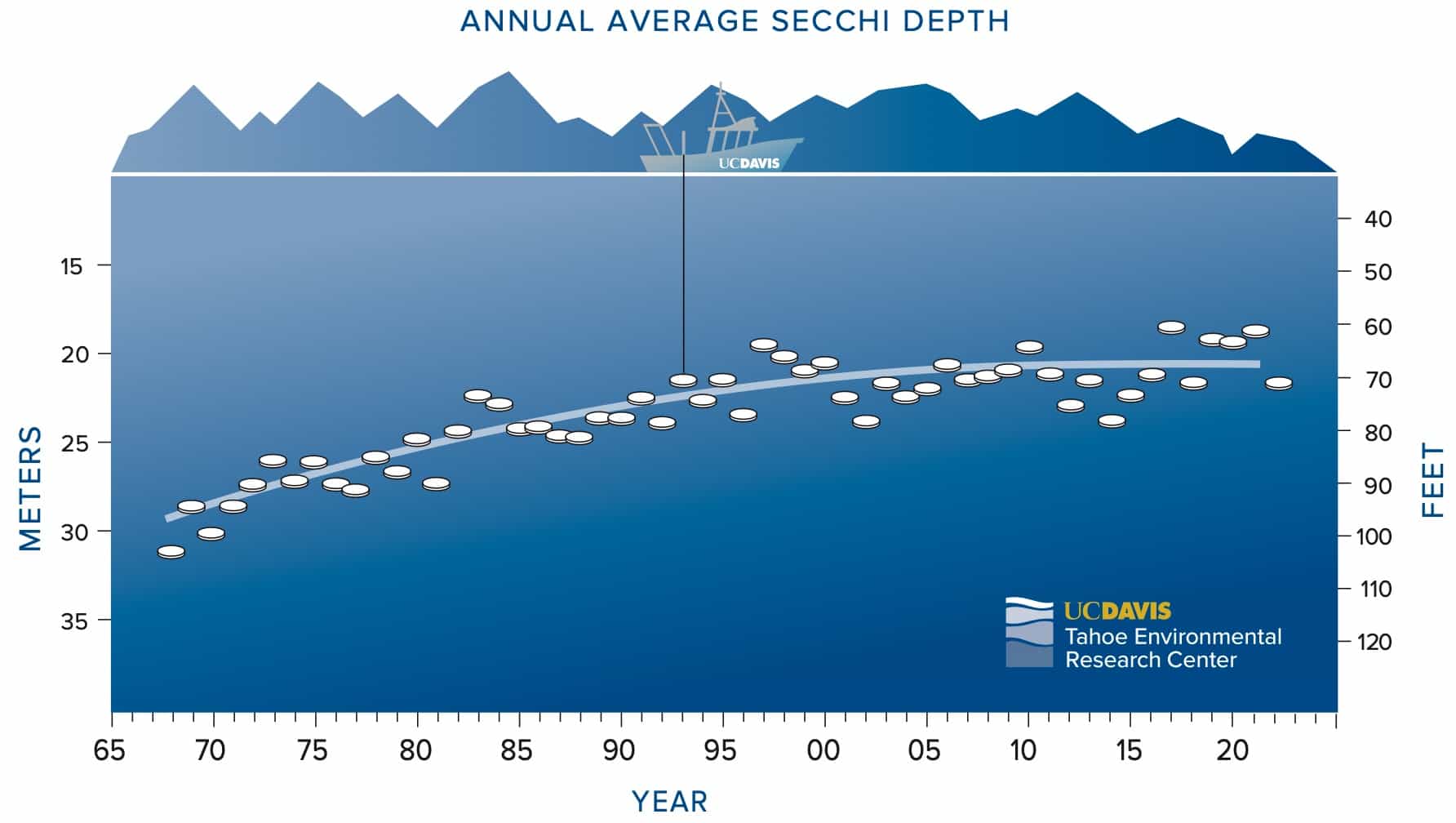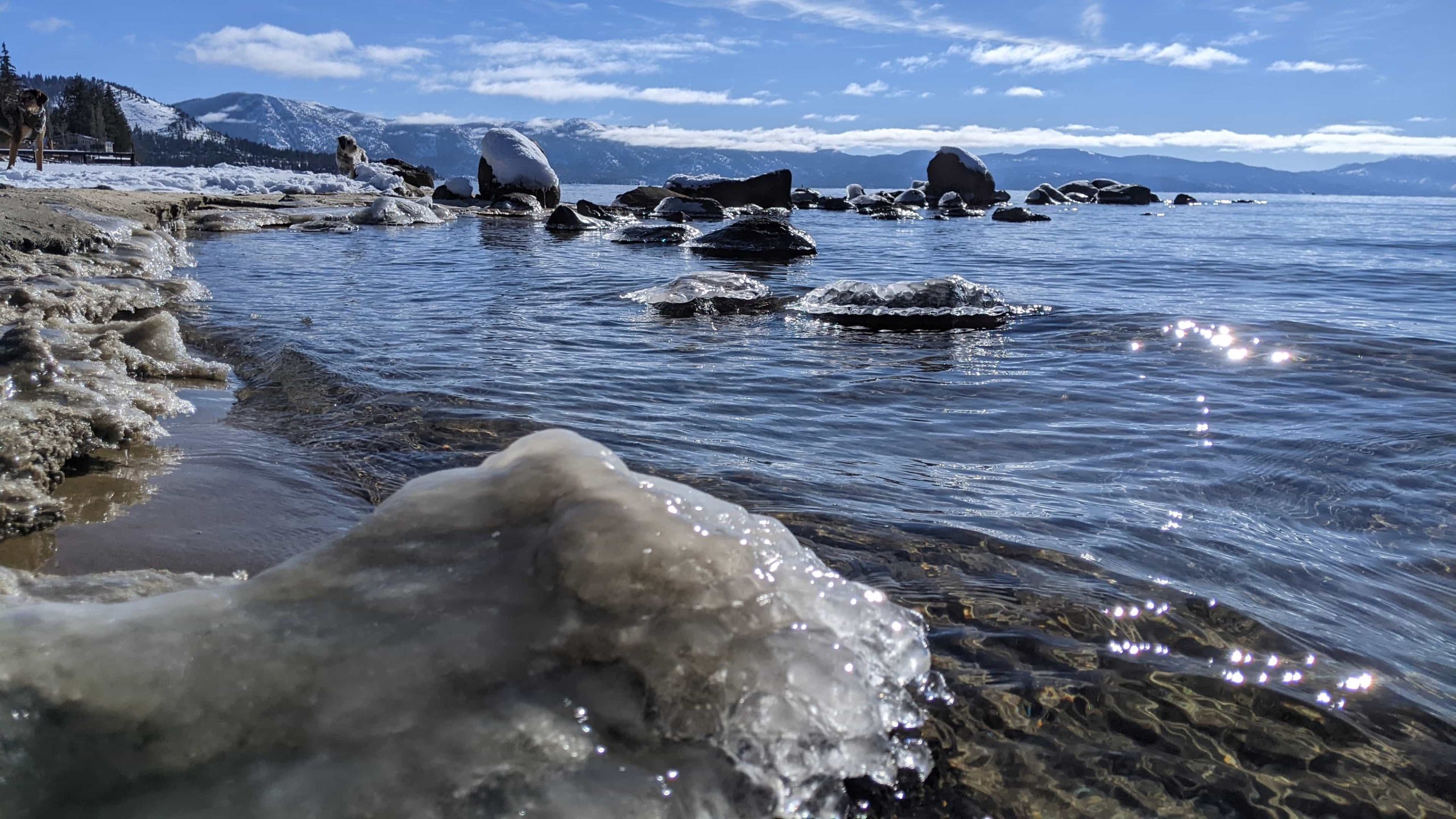
The Tahoe Environmental Research Center, or TERC, at the University of California, Davis, just released its annual Tahoe: State of the Lake Report, describing the past year as one of rapid biological change.
The 2023 report presents data collected during 2022 and puts it in context with historical records. It also serves as an important resource for restoration, management, and monitoring decisions.
UC Davis researchers have been monitoring the second deepest lake in the United States continuously since 1968, and the report provides an update for nonscientists on a variety of factors affecting the health of Lake Tahoe.
Rapid changes
The report details changes in lake clarity and the possible links to a sudden decline in the Mysis shrimp population. Extensive algal blooms in the nearshore of the lake and new data on microplastics are also detailed. Other topics include new monitoring and modeling efforts, lowered nitrogen and phosphorus levels, and research into the efficacy of no-wake zones.
“The lake is in a state of rapid change, which presents us the opportunity and the challenge to better understand the lake with more and smarter monitoring. Within 2022 we had more changes throughout the lake than we’ve experienced over decades.”
– Geoffrey Schladow, TERC director and a professor of civil and environmental engineering
The biggest change in the lake had to do with the rapid improvement in clarity from August through December, which was the best measured since the 1980s. This was preceded by the population collapse of Mysisshrimp, a species introduced to the lake decades ago, and other changes in the lake’s native phytoplankton and zooplankton.
“There are many complex processes occurring that we don’t fully understand. We need to better understand them to continue moving forward.”
– Geoffrey Schladow
As part of research on this topic, an acoustic doppler current profiler was installed this June at 300 feet below the surface on the west side of the lake to provide continuous water velocity measurements and “to track the expected resurgence of the Mysis shrimp in the coming years,” the report’s executive summary said.

Nitrogen, algae changes
In other positive developments, restoration and management efforts continued to reduce nutrient and fine particle loads entering the lake. Total nitrogen coming into the lake from the Upper Truckee River, which is the largest source of water into the system, was 11.1 metric tons per year compared to the mean annual load of 17.3 metric tons per year.
Other biological changes included huge swings in the algal population and their rate of photosynthesis. As the water level fell in 2022 and temperatures increased, so did the makeup of the algal community, with a Cyanobacteria comprising the greatest number of phytoplankton. More areas of attached algae, or periphyton, were also noted in 2022. Some 16 miles of beach were fouled by decaying algae washing up on the beaches.
Other report highlights:
- Water levels in the lake change throughout the year based on weather, inflows, and outflows. A wet November and December filled up the lake, bringing it almost to maximum capacity.
- Microplastic pollution is an issue in Lake Tahoe, where samples show levels akin to San Francisco Bay. “What goes into Tahoe stays in Tahoe,” Schladow said. “It’s a worry for every aquatic system.”
- TERC has 25 stations around the Lake Tahoe Basin that relay real-time measurements, as well as autonomous underwater vehicles, satellites, drones and helicopters. New, machine learning technology helped to better monitor beaches and nearshore areas.
- Extreme weather froze Emerald Bay and led to a longer period of vertical mixing in Lake Tahoe.
- A new, undergraduate student summer internship program launched in June.
The State of the Lake report’s production was funded by the California Tahoe Conservancy, Mountain Workspace, Tahoe Fund, Tahoe Regional Planning Agency, Tahoe Lakefront Owners’ Association, Lahontan Regional Water Quality Control Board, The League to Save Lake Tahoe, Lake Tahoe Marina Association, Parasol Tahoe Community Foundation, Tahoe Water Suppliers Association, TruePoint Solutions, Truckee Tahoe Airport, and Incline Village Waste Not.
